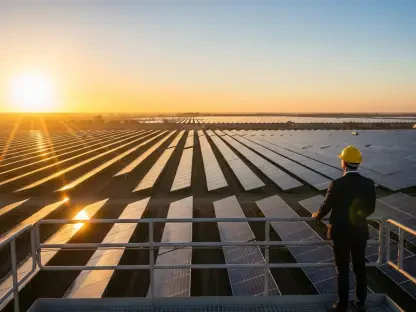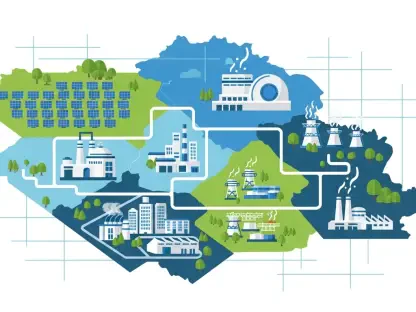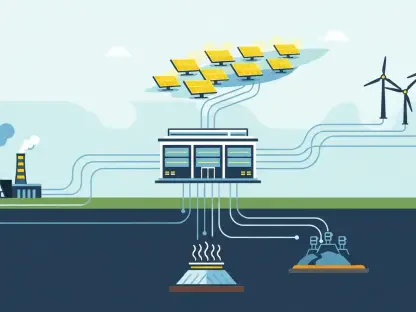I’m thrilled to sit down with Christopher Hailstone, a leading expert in energy management and renewable energy strategies. With his deep knowledge of electricity delivery and grid reliability, Christopher offers unparalleled insights into the complex challenges facing global energy markets. Today, we’re diving into Britain’s ambitious plans to boost its AI industry while grappling with soaring electricity costs and a critical transition to low-carbon energy sources. Our conversation explores the intricate balance between energy demand, economic growth, and sustainable power solutions, shedding light on what this means for the future of Britain’s energy landscape.
Can you walk us through why Britain is struggling with high electricity costs while trying to expand its AI industry?
Certainly, Ava. Britain’s AI ambitions are incredibly energy-intensive, primarily due to the massive power needs of data centers that drive AI technologies. At the same time, the country is dealing with some of the highest wholesale electricity prices among developed economies, averaging around $115 per megawatt hour recently. This is driven by a reliance on volatile natural gas for power generation, especially during periods of low renewable output or harsh weather. The clash between soaring demand and high costs creates a real bottleneck for growth in tech sectors like AI.
How significant is the role of data centers in pushing up Britain’s energy demand?
It’s huge. According to the grid operator NESO, electricity demand in the UK is projected to jump from 319 terawatt hours in 2024 to 450 terawatt hours by 2035. A substantial chunk of that increase—about a tripling of power needs—comes directly from data centers supporting AI and other digital infrastructure. These facilities often need dedicated, uninterrupted energy sources, which puts immense pressure on an already strained grid.
What are the key factors making UK wholesale electricity prices so much higher than in places like the US or France?
There are a few critical factors at play. First, the UK’s heavy dependence on natural gas for power generation leaves it vulnerable to price swings in global gas markets. When gas prices spike, as they did recently, electricity costs follow. Additionally, reduced wind output during certain periods forces the grid to lean on more expensive backup sources. Compare this to France, with its nuclear-heavy energy mix at about $73 per megawatt hour, or the US, with diverse and cheaper energy options at $48 per megawatt hour, and you see why the UK is at a disadvantage.
With this sharp rise in demand projected by 2035, how is Britain planning to adapt its energy strategy?
The government is focusing on a major overhaul of the energy system, emphasizing low-carbon sources to meet this demand. The plan includes scaling up renewable generation, particularly offshore wind, and investing in nuclear power. There’s also a push for better battery storage, improved transmission infrastructure, and even grid connections with neighboring countries. However, these solutions require significant upfront investment, and there’s no quick fix to bridge the gap between current capacity and future needs.
Britain’s goal to cut energy costs involves shifting away from natural gas to renewables. How feasible is this in the near term?
In the short term, it’s a tough road. While the intent to reduce reliance on natural gas is sound—given its price volatility—transitioning to renewables involves massive capital costs for infrastructure like wind farms and grid upgrades. The reality is that these investments often translate to higher energy bills for consumers initially, which can strain public support. It’s a long-term play, but the next few years will likely see continued tension between cost and sustainability goals.
Let’s talk about offshore wind, a cornerstone of Britain’s renewable push. What are the current targets and challenges in this area?
The government has set an ambitious target of increasing offshore wind capacity to between 43 and 50 gigawatts by 2030, up from about 15 gigawatts today. That’s a huge leap, but rising construction and financing costs are major hurdles. For instance, projects like Hornsea 4 have been halted due to these cost pressures. To counter this, the government has raised the guaranteed price, or strike price, for offshore wind in recent auctions, though it remains to be seen if this will fully incentivize developers to move forward.
Nuclear power is also part of the low-carbon strategy. Can you elaborate on its role and the progress with projects like Sizewell C?
Nuclear power offers a steady, low-carbon energy source, which is vital for balancing the intermittency of renewables like wind. The Sizewell C plant in eastern England is a flagship project, with operations expected by 2030. It’s only the second new nuclear plant in Britain in decades, so it’s a big deal. However, costs have ballooned to around 38 billion pounds, nearly double the initial estimates due to inflation and material price hikes. This raises questions about affordability and how these costs might impact energy prices down the line.
Some argue that focusing on offshore wind and nuclear could hurt British industry’s competitiveness due to high energy costs. What’s your take on this?
There’s definitely a risk. Higher energy costs, even if tied to sustainable goals, can put British businesses at a disadvantage, especially in energy-hungry sectors like tech and manufacturing. For the AI industry, which relies on cheap, reliable power, elevated costs could slow investment or push companies to look elsewhere. It’s a balancing act—investing in clean energy is crucial for the future, but if costs aren’t managed, it could undermine the very economic growth these policies aim to support.
Looking ahead, what is your forecast for Britain’s energy transition and its impact on the AI sector over the next decade?
I think the next decade will be a defining period for Britain. If investments in renewables, nuclear, and grid infrastructure are executed well, we could see a more stable and sustainable energy system by the early 2030s, which would be a boon for the AI sector. However, the interim will likely be rocky—high costs and potential supply constraints could hinder growth in power-intensive industries. The government will need to prioritize strategic partnerships and innovative financing to spread costs and avoid alienating consumers or businesses. It’s a challenging path, but with the right focus, Britain could emerge as a leader in balancing tech innovation with green energy.









